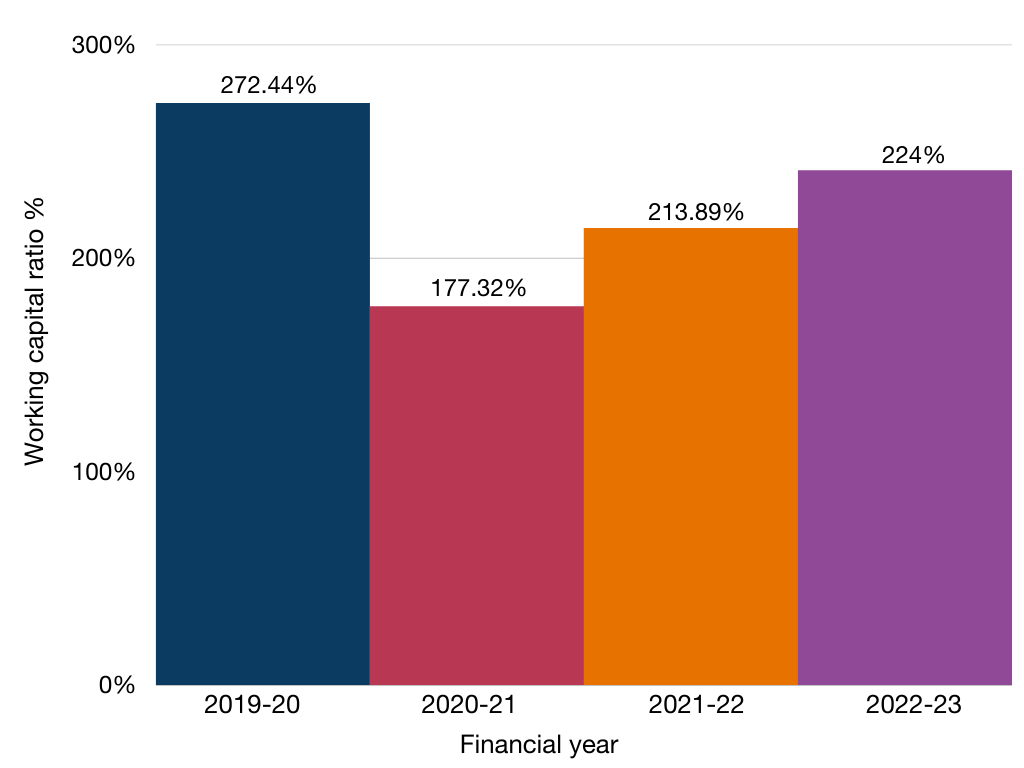This is a summary of our performance for the FY2022-23. You can find more information in our Independent Auditor’s Reports of our Financial Report and Performance Statement in the Downloads section on this page.
Operating position
Our net operating surplus for 2022-23 is $24.24 million. This surplus compares favourably to the original budget surplus of $6.61 million. The favourable variance is primarily due to the favourable impact of higher than anticipated interest rates, which generated a higher return on investment; unanticipated capital grants received and a required fair value adjustment resulting from a change in accounting policy on our investment properties. This favourable variance was partially offset by continued COVID-19 impacts on our leisure and aquatic facilities.
The adjusted underlying result – after removing non-recurrent capital grant income, monetary contributions and non-monetary asset contributions – is $8.9 million. The adjusted underlying result for 2022-23 has normalised due to the impacts of COVID-19 in 2021-22 and resulting impacts on revenue and expenditure streams.

Liquidity
The working capital ratio, which assesses our ability to meet current commitments, is calculated by measuring our current assets as a percentage of current liabilities. Our result of 241% indicates a satisfactory financial position.

Obligations
We ensure that we maintain infrastructure assets at expected levels while continuing to deliver the services needed by the community. We invested $43.49 million in renewal works in 2022-23, including:
- the renewal of buildings ($17.47 million)
- roads ($10.27 million)
- drainage ($3.69 million).
This was funded from capital grants of $10 million and cash flow from operations of $33.49 million. At the end of 2022-23, our loans and borrowings repayment ratio – measured by comparing interest-bearing loans and borrowing repayments to rate revenue – was 14.75%. This increased significantly to the prior year’s value of 1.48%, which is reflective of the first full year of the repayment of the $70 million Treasury Corporation Victoria loan that was drawn in June 2022.
Asset renewal ratio is measured by comparing asset renewal and upgrade expenditure to depreciation, and was 125% in 2022-23. This is a slight decline on previous years due to a review of the timing of planned renewal projects, in the context of rising construction costs, resulting in some planned works being deferred to be undertaken in future years.


Stability and efficiency
We raise revenue from rates, user fees, fines, grants and contributions. Our rates concentration, which compares rate revenue to adjusted underlying revenue, was 76.51% for 2022-23. We are very reliant on rates as a source of revenue because of statutory restrictions on many fees and charges, and the inadequate increase in the payments from the Victorian Government to adequately fund services. In 2022-23, non-rate revenue has increased in proportion to rate revenue resulting in the decline of the rates concentration ratio due to the continued recovery of our non-rate revenue streams, which have been impacted by COVID-19 in prior years.
